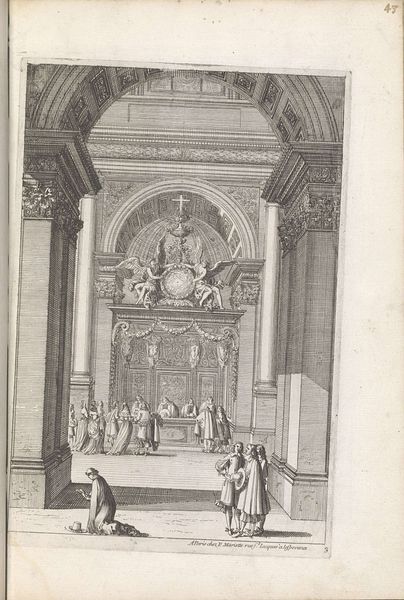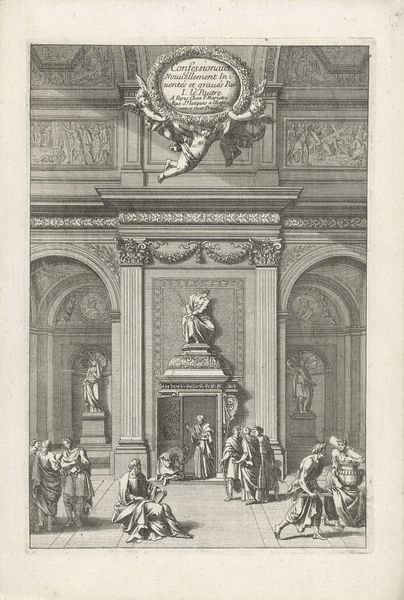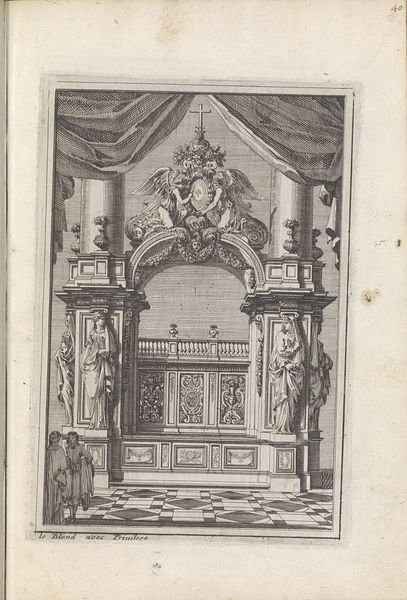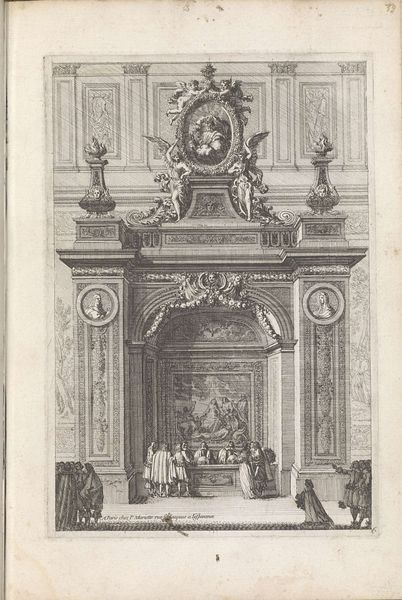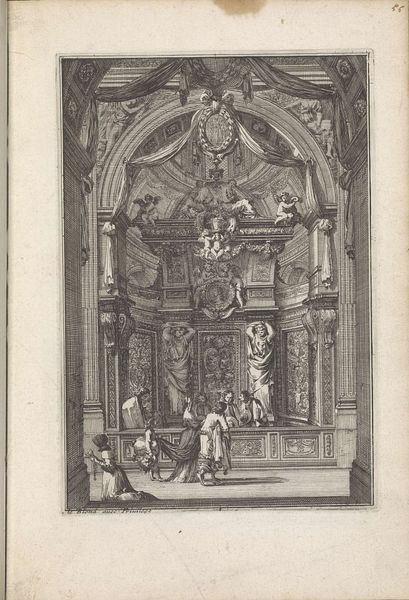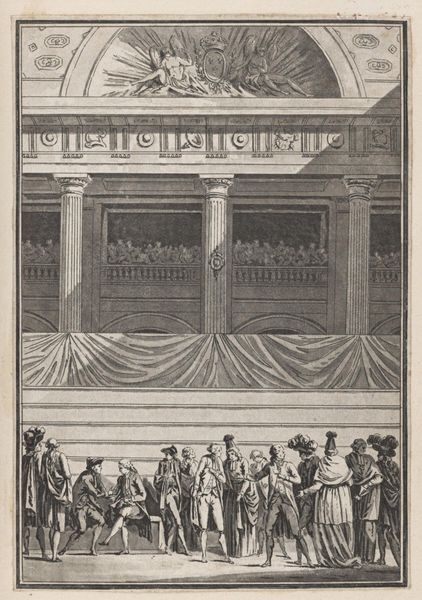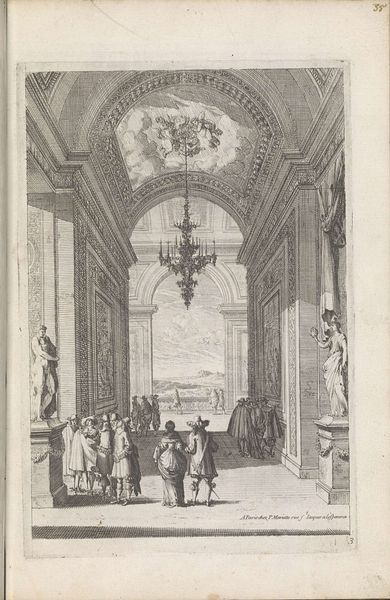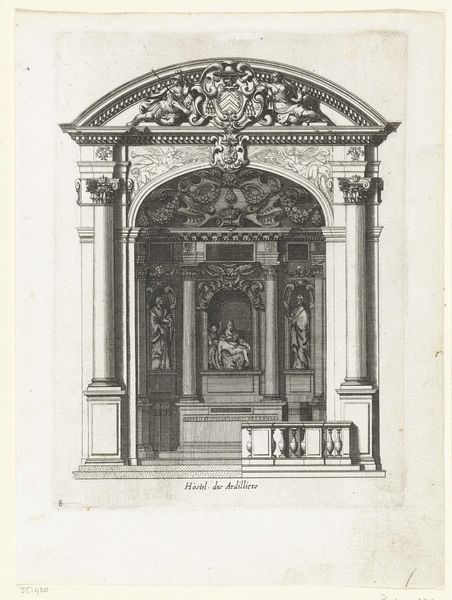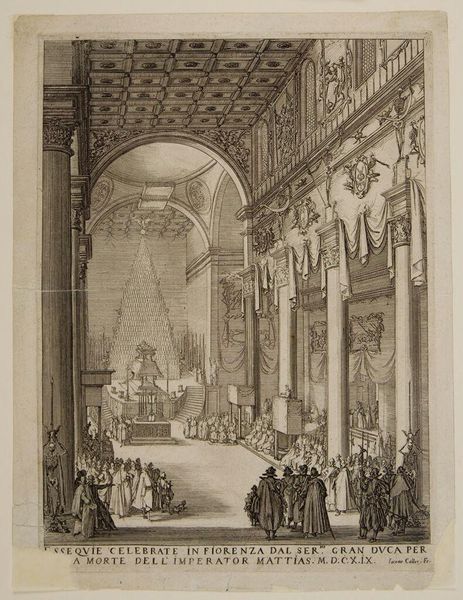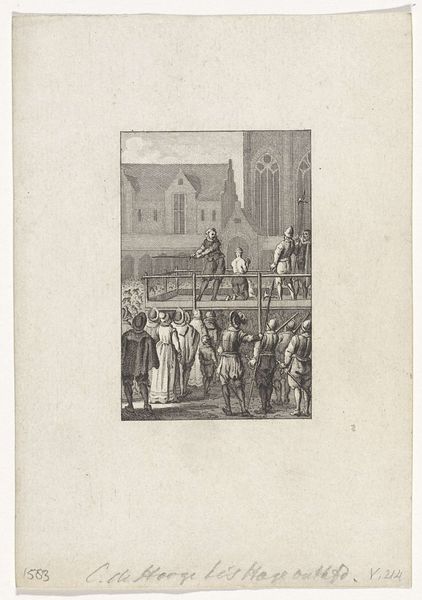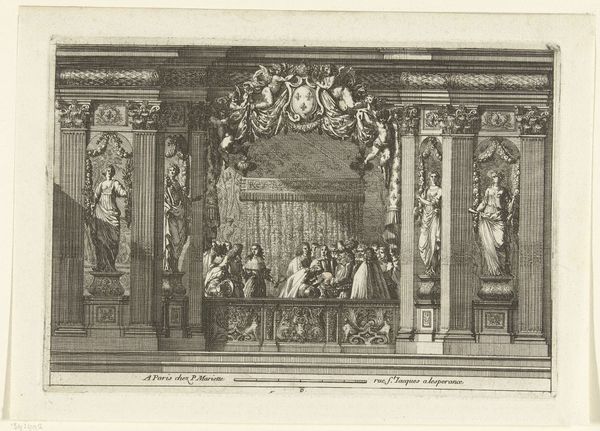
print, engraving, architecture
#
baroque
# print
#
line
#
cityscape
#
history-painting
#
engraving
#
architecture
Dimensions: height 225 mm, width 152 mm
Copyright: Rijks Museum: Open Domain
Editor: So, here we have "Gezicht in het schip van een kerk" by Jean Lepautre, made sometime between 1657 and 1665. It's an engraving, a print. I’m struck by the sheer detail and how ornate the architecture is, almost overwhelming. What's your take on this work? Curator: Well, let's consider this engraving not just as a representation, but as a product. Look at the labor involved in creating this level of detail using engraving tools. Each line, each flourish, is a testament to the engraver's skill and the time invested. This wasn’t a spontaneous act of creation, but a carefully planned and executed process rooted in the workshop. How do you think the Baroque style and the medium influenced each other in this case? Editor: That’s interesting. I hadn't considered the physical effort so much. It feels like the Baroque love of ornamentation has been completely translated into a medium that requires intense precision. So the architectural subject demands detail, but the engraving *produces* it, through labour and expertise. Curator: Precisely! Think about who this print was *for*. Was it accessible to the masses, or intended for a more privileged audience that could appreciate and afford such intricate work? The social context of production and consumption shapes the very meaning of the piece, don't you think? We are looking at an artwork but what we see is a whole history of human production and consumption tied into each line of the engraving, a system of patronage, production, and privilege! Editor: Definitely. It makes me think about the role of prints in disseminating images and architectural ideas at the time. So much effort expended for that goal. This discussion gave me a totally new way of perceiving it, not only considering its image, but how that image was laboriously and skillfully made. Curator: Indeed. Seeing art through the lens of materiality opens up entirely new avenues for interpretation and challenges the traditional canon by acknowledging the vital roles of labor, craft, and the socio-economic context in artistic creation.
Comments
No comments
Be the first to comment and join the conversation on the ultimate creative platform.
